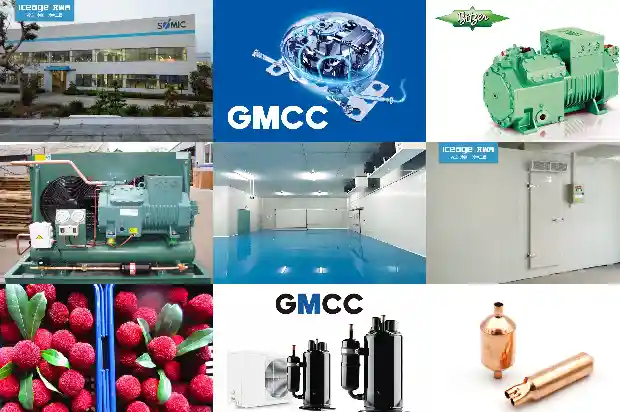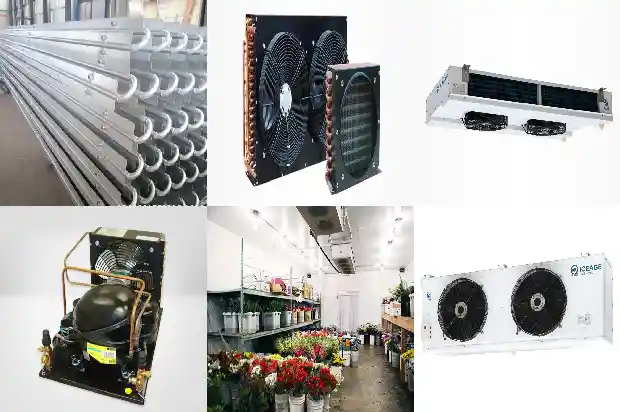【HVAC Design Summary】 - Free Cooling with Cooling Towers
2025-01-04
Design Location:
Locations that require cooling in winter or transitional seasons are generally the interior areas of buildings with large heat emissions.
The cooling range of the cooling tower mainly covers the fan coil units in the interior area. For the all-air system, it operates with 100% fresh air in winter, and by adjusting the maximum fresh air ratio, it can basically meet the load requirements of the interior area.
Locations that require cooling in winter or transitional seasons are generally the interior areas of buildings with large heat emissions.
The cooling range of the cooling tower mainly covers the fan coil units in the interior area. For the all-air system, it operates with 100% fresh air in winter, and by adjusting the maximum fresh air ratio, it can basically meet the load requirements of the interior area.
Design Principles:
Try to extend the cooling time of the cooling tower and make full use of the chilled water pumps and cooling water pumps under summer conditions.
Try to extend the cooling time of the cooling tower and make full use of the chilled water pumps and cooling water pumps under summer conditions.
- To obtain the same cooling water supply temperature, the smaller the cooling water temperature difference, the higher the required wet bulb temperature.
- When the designed flow rate of the cooling water is less than the rated flow rate of the cooling tower, a lower cooling water supply temperature or a larger cooling water temperature difference than the rated condition can be obtained.

Investment Returns:
- The price of an open cooling tower is approximately 500 yuan/CMH (cooling water flow rate). The price of a closed cooling tower is about 3 to 4 times that of an open cooling tower. From an investment perspective, for cooling tower cooling, a plate heat exchanger + an existing open cooling tower is generally adopted, and the initial investment will not exceed half the price of a closed cooling tower.
- The smaller the cooling water temperature difference, the larger the flow rate of the cooling water pump, and the greater the power consumption of the cooling water pump.
The smaller the cooling water temperature difference, the higher the required wet bulb temperature, and the longer the free cooling time.
The power consumption saved by the refrigeration unit is far greater than the increased power consumption of the cooling water pump.
Design Steps:
- Divide the interior and exterior areas and calculate the load of the interior area (loads caused by heat emissions from personnel, lighting, equipment, etc.).
- Install fan coil units and fresh air systems separately for the interior and exterior areas.
- Determine the operating condition conversion point according to the winter thermodynamic curve of the cooling tower:
Chilled water supply temperature and temperature difference, cooling water supply temperature and temperature difference. - Select a plate heat exchanger.

- Select cooling water pumps and chilled water pumps.
- Check the selection of fan coil units in the interior area (cooling capacity under non-standard operating conditions).
Chilled Water Supply Temperature and Temperature Difference:
There are generally three methods for chilled water supply temperature and temperature difference:
There are generally three methods for chilled water supply temperature and temperature difference:
- Completely follow the summer operating condition, such as 7/12℃. This is convenient for the selection of fan coil units and the sharing of chilled water pumps.
- Increase the supply and return water temperature by 1℃, such as 8/13℃. When selecting fan coil units in the interior area under summer operating conditions, select according to the medium air volume. When the cooling tower provides cooling, adjust the fan coil units in the interior area to the high air volume, which can basically meet the load requirements of the interior area. This method can not only share the chilled water pump but also extend the cooling time of the cooling tower.
- Adopt a higher supply and return water temperature, such as 9/14℃, 10/15℃, 11/16℃. When selecting fan coil units in the interior area under summer operating conditions, it is necessary to check according to the cooling condition of the cooling tower, and it needs to be enlarged by a certain multiple (1.2 - 1.3) to meet the load requirements of the interior area. This method can further extend the cooling time of the cooling tower, but the terminal capacity will increase, and the initial investment will also increase.
Cooling Water Supply Temperature and Temperature Difference:
Determine the cooling water supply temperature, temperature difference, and wet bulb temperature based on the chilled water supply temperature and temperature difference:
Determine the cooling water supply temperature, temperature difference, and wet bulb temperature based on the chilled water supply temperature and temperature difference:
- Calculate the temperature difference between the chilled water supply temperature and the cooling water supply temperature as 1 - 2℃ (generally 1℃).
- The cooling water temperature difference is generally taken as 2 - 3℃ (preferably a small temperature difference).
- Consult the winter thermodynamic curve of the cooling tower according to the cooling water supply temperature and temperature difference to obtain the required wet bulb temperature.
When there is no curve graph, it can be estimated that the cooling water supply temperature = wet bulb temperature + approach temperature, and the approach temperature is generally 2 - 4℃.
Chilled Water Pumps:
Try to make use of the chilled water pumps under summer operating conditions. There are generally two methods:
Try to make use of the chilled water pumps under summer operating conditions. There are generally two methods:
- When selecting a refrigeration unit, the refrigeration capacity of the refrigeration unit = the load of the interior area. The plate heat exchanger and the refrigeration unit share a set of chilled water pumps. The prerequisite for this method is that the chilled water supply and return temperature differences under the two operating conditions are consistent.
- Conduct frequency conversion control on the chilled water pump under summer operating conditions to maintain a constant pressure difference in the main supply and return pipes, and the flow rate adjustment range of the pump should be able to meet the load requirements of the interior area.
Cooling Water Pumps:
Calculate the cooling water flow rate based on the cooling water temperature difference. Since the temperature difference is generally taken as 2 - 3℃, the flow rate is relatively large, and when the cooling tower operates at less than the rated flow rate, the free cooling effect is better. Generally, one cooling water pump is used for two cooling towers.
Calculate the cooling water flow rate based on the cooling water temperature difference. Since the temperature difference is generally taken as 2 - 3℃, the flow rate is relatively large, and when the cooling tower operates at less than the rated flow rate, the free cooling effect is better. Generally, one cooling water pump is used for two cooling towers.
Cooling Towers:
When used in winter, the cooling water pipes need to be equipped with electric heat tracing insulation to ensure that the temperature inside the pipes is not lower than 5℃.
When used in winter, the cooling water pipes need to be equipped with electric heat tracing insulation to ensure that the temperature inside the pipes is not lower than 5℃.
Precautions:
- When the cooling capacity of the cooling tower is less than the load of the interior area, it is necessary to switch to the operation of the refrigeration unit. At this time, the cooling water temperature is low, and measures need to be taken to ensure the safe start of the refrigeration unit. In addition, the refrigeration unit itself should also be able to adapt to the low-temperature cooling water.
- The cooling tower is an open system and is in direct contact with the air, so the plate heat exchanger is prone to clogging. It should be cleaned in a timely manner in summer, or measures such as chemical dosing should be taken to ensure the heat transfer efficiency of the plate heat exchanger.
- The cooling water inlet temperature of the electric compression refrigeration unit should not be lower than 15.5℃, while the temperature during cooling tower cooling is generally lower than 15.5℃. Therefore, the cooling tower cooling system must not be used for water-cooled equipment that requires cooling water all year round.
- When the fan coil unit uses the cooling tower for cooling, its fresh air system should operate with 100% fresh air, and anti-freezing measures should be taken.
Related Articles
- HVAC Design | Basics of Cooling Towers
- Fin Spacing Design of Cooler and Several Knowledge Points of Defrosting in Cold Storage
- Precautions for Cold Storage Design
- What Are the Common Reasons for Difficulties in Cooling a Cold Storage?
- Remember! 3 Steps to Calculate Central Air - conditioner Cooling Capacity
- Could a Tiny Copper Tube Cause a Multi - split Air Conditioner to Stop Cooling? Refrigeration Workers Must Pay Attention!
- 9 Heating and Cooling Solutions: Pros and Cons You Must Know!
- Cleaning Procedures and Methods for Cooling Towers and Heat Exchangers
- Basic Knowledge of Cooling Towers
- For Computer Room Air Conditioners, Besides Air - cooled and Water - cooled, What Other Cooling Methods Are There?
- What are the Cooling and Heating Pressures of an Air Conditioner? How to Calculate the Optimal Refrigerant Quantity?
- Why Is the Cooling Speed of the Cold Storage So Slow?
- How to Choose between Open - type and Closed - type Cooling Towers?
- Introduction to the Cleaning Processes and Methods of Heat Exchangers and Cooling Towers
- How to Choose the Bearings of Cooling Fans?
- What are the precooling methods after the installation of cold storage?
- The Significance of Subcooling Degree in Refrigeration Systems and Methods for Achieving Subcooling
- 4 Points on Causes of Water Leakage in Closed Cooling Towers
